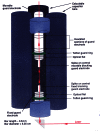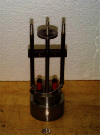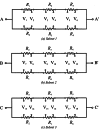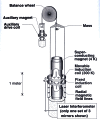The Ampere and Electrical Standards
- PMID: 27500018
- PMCID: PMC4865284
- DOI: 10.6028/jres.106.005
The Ampere and Electrical Standards
Abstract
This paper describes some of the major contributions to metrology and physics made by the NIST Electricity Division, which has existed since 1901. It was one of the six original divisions of the National Bureau of Standards. The Electricity Division provides dc and low-frequency calibrations for industrial, scientific, and research organizations, and conducts research on topics related to electrical metrology and fundamental constants. The early work of the Electricity Division staff included the development of precision standards, such as Rosa and Thomas standard resistors and the ac-dc thermal converter. Research contributions helped define the early international system of measurement units and bring about the transition to absolute units based on fundamental principles and physical and dimensional measurements. NIST research has helped to develop and refine electrical standards using the quantum Hall effect and the Josephson effect, which are both based on quantum physics. Four projects covering a number of voltage and impedance measurements are described in detail. Several other areas of current research at NIST are described, including the use of the Internet for international compatibility in metrology, determination of the fine-structure and Planck constants, and construction of the electronic kilogram.
Keywords: Internet; calibration; electrical engineering; josephson arrays; measurement units; resistance measurements.
Figures



























References
-
- Thomas JL. Precision resistors and their measurement. NBS Circ. 1948;470
-
- Silsbee FB. Establishment and maintenance of the electrical units. NBS Circ. 1949;475
-
- Harris FK. Electrical units; Proc 19th An Instrum Soc Amer Conf (Paper No. 12.1-1-64); 1964.
-
- Cochrane RC. Measures for Progress—A History of the National Bureau of Standards. U.S. Dept of Commerce; Washington, DC: 1966. - PubMed
-
- Rosa EB. Report to the International Committee on Electrical Units and Standards. NBS Misc Publ M. 1912;16
LinkOut - more resources
Full Text Sources
Miscellaneous
